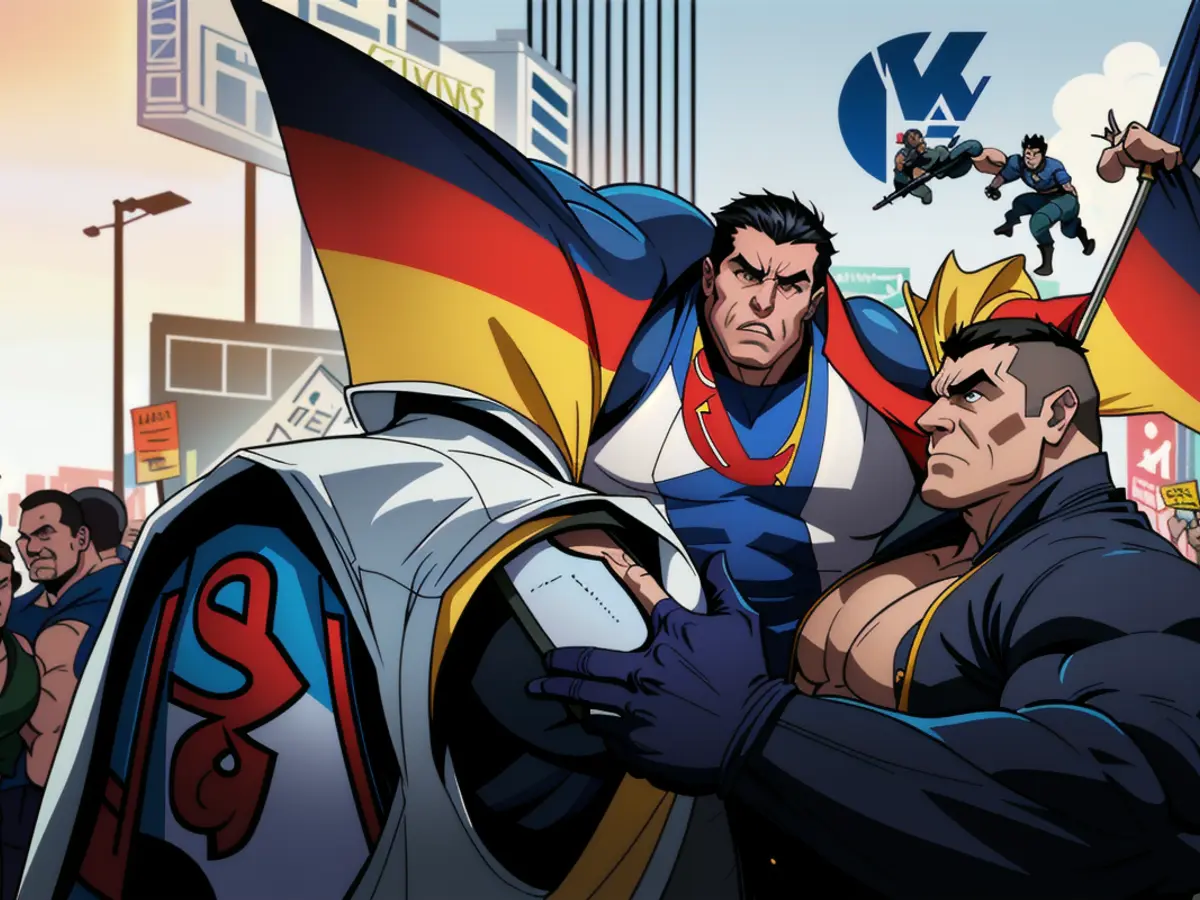Neo-Nazis Arrested in Berlin: Another Right-Wing Extremist March
ProInitial detentions during neo-Nazi rally in Berlin - Prosecution of Neo-Nazi Protesters in Berlin's Initial Arrests
In a heated scene in Berlin, police, accompanied by counter-protesters, managed a right-wing extremist demonstration. The gathering was met with initial arrests when some demonstrators failed to comply with the ban on face coverings, as revealed by a police spokesman. About 850 people joined the march nicknamed "For Law and Order. Against Left-wing Extremism and Politically Motivated Violence," despite forecasts of 1,200 expected participants.
The event, which marked the third neo-Nazi demonstration under this title since December 2024, saw scuffles and sit-in blockades by counter-protesters.ely, Spokesman Florian Nath emphasized the protective role of law enforcement in facilitating speech, stating, "We never protect the content of the assembly, but only the right to assembly itself."
Being a city with a complex history tied to the Nazi Party, Berlin has a long-standing issue with neo-Nazi movements. Post World War II, remnants of Nazi ideology resurfaced in the form of neo-Nazism, as young individuals and some veterans came together to promote the ideologies covertly. Today, neo-Nazi groups continue to operate clandestinely, organizing marches, concerts, and other events to promote their extremist agendas.
Though police make efforts to monitor these activities and curb violations, arrests are a regular occurrence. Participants who violate bans, wear prohibited symbols, or engage in illegal activities can be detained. Civil society organizations and left-wing movements mobilize to counter Neo-Nazi campaigns, organizing rallies, marches, and awareness initiatives to promote anti-fascist, anti-racist messages. One such project is the "Rechtes Land" map, which collects data on Neo-Nazi activities to increase public awareness of their scope.
In this current demonstration, officers, including many who stationed at Ostkreuz, managed to separate the opposing groups and protect both parties' rights to assemble. Despite the occasional clashes, the peaceful demonstration proceeded along its planned route, crossing Frankfurter Tor before reaching Rigaer Straße. Nevertheless, the counter-protesters and police clashed, standing firm in their ideological differences. This latest Neo-Nazi event is a testament to Germany's ongoing battle against extremism, as it grapples with the delicate balance of freedom of speech and the need to prevent hate speech and violence.
- Berlin
- Police
- Right-wing Extremism
- Counter-protest
- Large Deployment
- Friedrichshoin
- Scuffles
- Despite the city's complicated history with neo-Nazi movements in Berlin, the police, specifically those stationed at Ostkreuz, deployed in large numbers to manage the right-wing extremist demonstration and ensure the safety of both the opposing groups during the counter-protest.
- Reports indicate that scuffles occurred between the counter-protesters and the neo-Nazi demonstrators in Friedrichshain, as the event in the street symbolized the ongoing battle against right-wing extremism.
- Given the repeated nature of neo-Nazi marches in Berlin, civil society organizations and left-wing movements often mobilize to launch counter-protests and awareness initiatives like the "Rechtes Land" map, which collects data on Neo-Nazi activities to inform the public about their extent.








